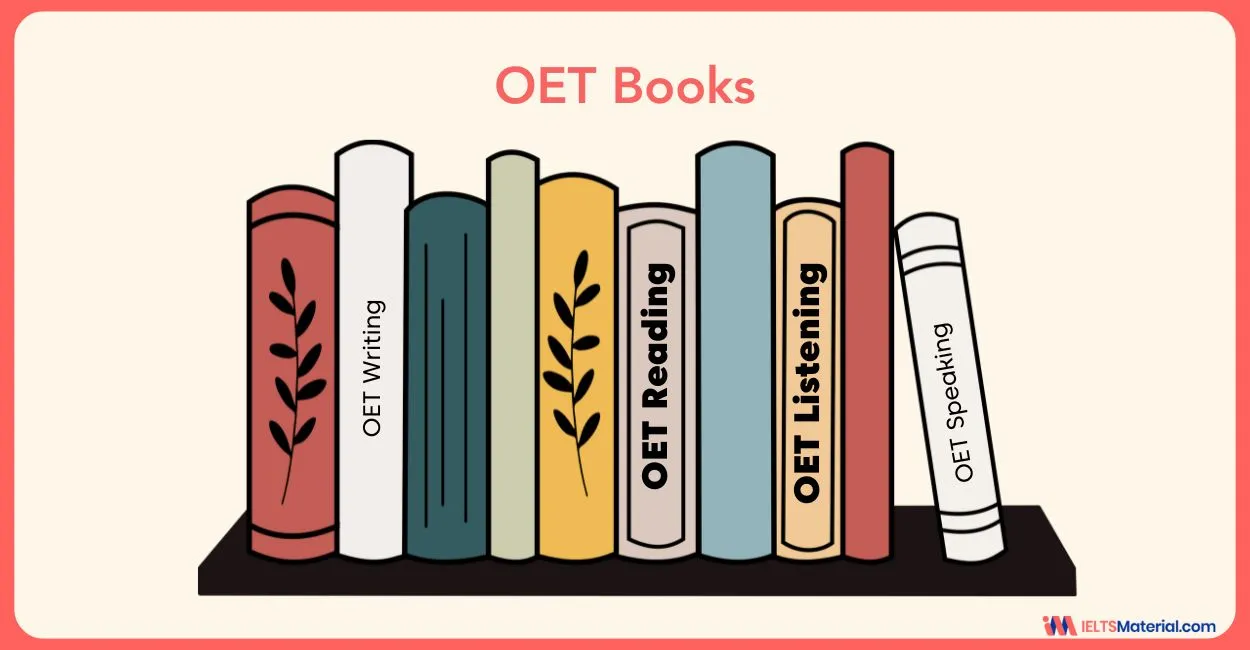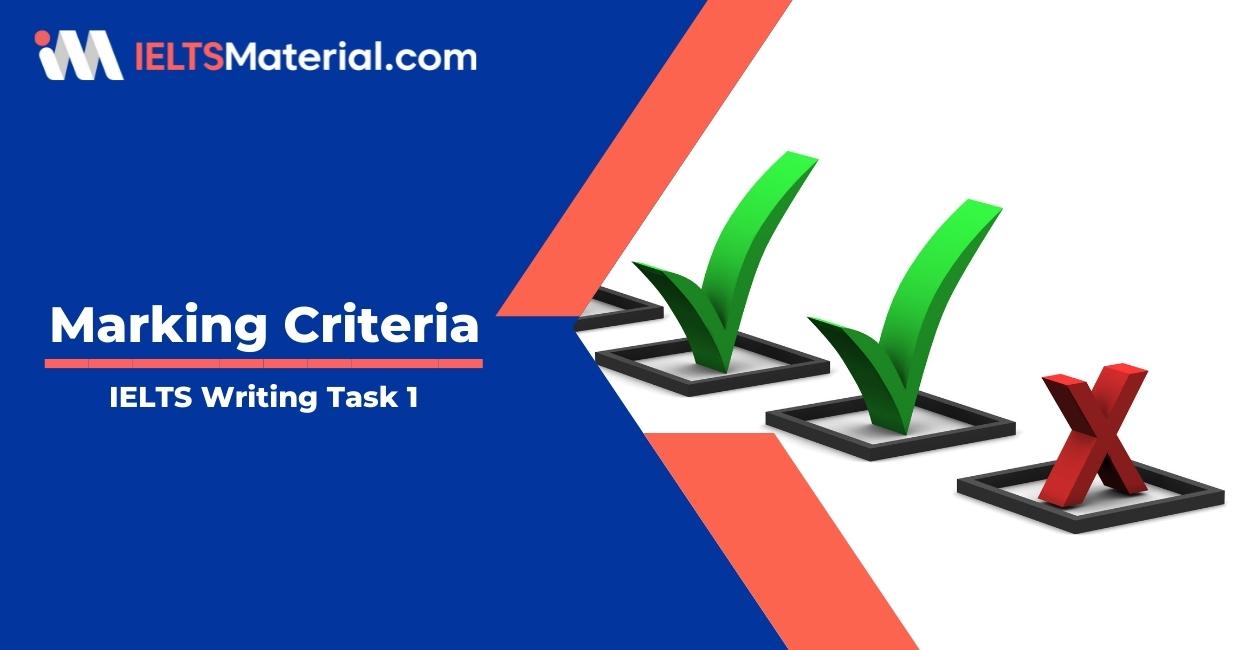IELTS Academic Writing Task 1 Marking Criteria
Table of Contents

Try AI Essay Checker for Instant Band Score
In the IELTS Academic Writing Task 1, you’ll have to create a factual report of the data that is provided to you. Once completed, you will be assessed and scored based on 4 marking criteria
- Vocabulary – 25%
- Grammatical Accuracy – 25%
- Task Achievement – 25%
- Coherence and Cohesion – 25%
Vocabulary
It’s important to remember that while marking, your vocabulary usage will account to 25% of the test’s total score. So try to work on improving your vocabulary skills. Some tips to focus on while concentrating on the vocabulary are
Avoid Spelling Mistakes
While practicing for your writing test, you’ll come across words for which you may not know how to spell. Learn and practice the correct spelling so that you’ll be more confident during the test.
Range in Vocabulary
Practice using nouns and verbs correctly while writing. It’s important to focus on using them the right way or else the content may not make sense. The more you practice, the more confident you’ll be in using different nouns and verbs in your essay.
Understanding Collocations
A collocation is two or more words that are often said together. Mostly between the two words, one of them will be a noun and the other will be a verb. For example, when it’s raining a lot, you can call it ‘heavy rain’ but you can’t say ‘large rain’. You can pick up common collocations by reading English passages in newspapers, journals, etc. Understanding collocations will help make it easier.
Avoid using informal language or slang
While practising for the test, you should try to learn to use more formal, professional, and respectful language. Make sure to avoid using language that may be considered as informal or slang.
Grammatical Accuracy
Another factor for marking the IELTS Writing Task 1 is grammatical accuracy. Tips to keep in mind while focusing on your grammar are
Use the right verb tense
Avoid making errors while using verb tenses in your essay. Between the three verb tenses, the past tense is used for things that have already happened, the present tense is used for things that are currently happening or things that are continuous, while the future tense is used to describe things that haven’t happened yet. Make sure to learn the different tenses for verbs you may frequently use.
Use punctuation marks in the right way
Punctuation marks are basically language aids that help with the interpretation of the text. The most common punctuation marks are upper case letters, full stops, commas, and question marks. It’s very important to learn how and when to use them.
Avoid basic grammatical errors
Learn the difference between nouns, verb, adverb, adjective and so on and how to use them. Basic grammatical errors in your essay can cause you to lose marks
Task Achievement
An important factor which the examiner checks for while marking is whether you’ve followed the instructions given in the question. Certain tips to focus on are
Follow the word count
For both the writing tasks, the word count will be mentioned and it is important to make sure you stick to it. For writing task 1, the word count given is 150 words, which means you should aim to write between 150 – 180 words. While for writing task 2, the word count given is 250 words, which means you should aim to write between 250 – 280 words. Remember, that marks will be deducted if you write under the word limit.
Emphasis on key features
For the Academic section of Writing Task 1 Academic, you’ll be expected to write a summary after analyzing a graph, table or chart. So it’s essential to be able to analyze and identify the key features of the chart and mention them in the summary. The examiner, while marking, will be checking for your ability to identify these key features.
Include data in the Body Paragraph
After analyzing the graph or chart, it’s very important to identify the presented data and include the details surrounding it in the body of the summary. The examiner will be looking out for details surrounding the data in the body paragraph.
Stick to the given information
While writing your summary, it’s necessary to write it based on the information that’s given in the question and not based on your opinion of the topic. Avoid writing an opinion, as the examiner will only be looking for how you write, based on your analysis of the given data.
Coherence and Cohesion
While writing Writing Task 1, you should make sure to follow the proper content structure that is expected. Here are some tips to follow
Proper Content Structure
While writing, it’s very important to follow a proper content structure, i.e you have to write it in four paragraphs. The first paragraph should be the introduction in brief. The second paragraph is the overview, and the third and fourth paragraphs are the body of the content. The overview paragraph can be written either after the introduction paragraph or at the end after the body paragraphs.
Organize the content
As mentioned earlier, the content has to be in 4 paragraphs, so you should keep in mind, what to write in which paragraph. The first paragraph will be the introduction, where you have to write a description of the graph in your own words. The second paragraph has to contain an overview, where you identify and mention all the key features of the graph. The next two paragraphs will be the body paragraph that should include the data and all the detailed information related to the graph.
Use a range of linking devices/ transition words
Transition words or linking devices are words that help make the content easy to read for the reader. They are words used to help link sentences and paragraphs together so that there is continuity while reading. Examples of transition words are ‘as’, ‘and’, ‘like’, ‘as well as’, ‘likewise’, and so on. So it is necessary to learn how to use these linking devices in the right way.
Also check :
Practice IELTS Writing Task 1 based on report types

Start Preparing for IELTS: Get Your 10-Day Study Plan Today!
Recent Articles

Nehasri Ravishenbagam

Nehasri Ravishenbagam

Kasturika Samanta





Post your Comments